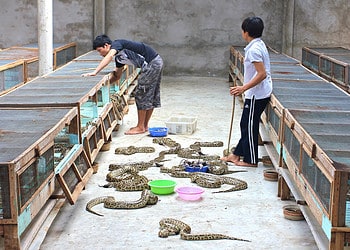
In South Florida, beneath the tangled brush of the Everglades, a toy rabbit stirs. It doesn’t hop or graze, but to a nearby Burmese python, it could pass for prey.
The rabbit is a plush toy gutted of its stuffing and wired with motors, heaters, solar panels, and motion sensors. It shimmers with body heat, shakes like something alive, and if all goes to plan, smells just enough like a real rabbit to fool one of the region’s most elusive predators.
“We want to capture all of the processes that an actual rabbit would give off,” Robert McCleery, a University of Florida wildlife ecologist and the project’s lead scientist, told The Palm Beach Post.
McCleery and his colleague Chris Dutton have built 40 of these “robo-bunnies” as an outside-the-box solution to one of Florida’s most stubborn ecological crises: invasive Burmese pythons.
The Snake That Swallowed the Everglades
Originally from Southeast Asia, Burmese pythons (Python bivittatus) arrived in Florida through the exotic pet trade, with sightings dating back to the 1970s. By the 21st century, they had formed a self-sustaining breeding population. Today, they rule parts of the Everglades as apex predators, devastating native wildlife and defying nearly every attempt to control them.
Between 2003 and 2011, mammal populations in snake-infested areas plummeted. Raccoons dropped by 99 percent. Bobcats by 88 percent. Marsh rabbits, a key food source for native predators—and now pythons—vanished entirely.
“Twenty years ago, the [Everglades] would have been teeming with wildlife,” said Mike Kirkland, a senior invasive animal biologist at the South Florida Water Management District, as per BBC Future. “Now I challenge you to find a single deer, possum, or squirrel.”
Pythons can easily disappear. They blend into the vegetation, evade trail cameras, and often slip through even the most advanced detection technologies. Despite Florida’s aggressive measures—including a 10-day public python hunt called the Python Challenge—the snakes remain stubbornly difficult to find.
“You get tired of documenting the problem,” McCleery said. “You want to address it.”
Enter: The Fluffy Decoy
McCleery and Dutton’s solution was to lure the predators out by mimicking their missing prey.
The team began with what worked: real rabbits in cages. They would attract about one python a week. But caring for dozens of live animals across the swampy Everglades proved too labor-intensive, not to mention ethically fraught. So they turned to robotics.
Each robo-bunny is a Frankenstein creation of synthetic fur, thermal heaters, motors, and solar-powered electronics. Some were even built with 3D-printed parts. A motion-sensor camera stands watch, silently alerting researchers when a snake slithers near.
So far, the team has deployed their decoys in rabbit pens across South Florida. They haven’t disclosed the exact locations. They don’t want people hunting for their robo-bunnies.
Still, the researchers know pythons aren’t easily fooled. If the snakes don’t take the bait, McCleery said they’re ready to perfume the robots with actual rabbit scent in the next phase of testing.

Robots vs. Pythons
The robo-bunny project joins a suite of creative, sometimes oddball python control strategies in Florida.
One program uses “scout snakes”—captured male pythons fitted with GPS trackers and released into the wild to lead researchers to breeding females. Another method employs near-infrared cameras and environmental DNA sampling to detect python presence in water or soil.
And then there’s the Florida Python Challenge, where more than 850 participants competed in 2024 to remove as many snakes as possible. The winner took home $10,000 for catching 20 snakes. These measures are not silver bullets—but together, they add up.
Still, no one expects to eradicate the snakes entirely. The goal is mitigation—enough reduction to let native species recover.
“If you can take out one female, it’s not just that single python,” herpetologist Andrew Durso, told The Guardian. “It’s all of her current and future reproduction, that’s thousands of eggs that will never be laid.”
McCleery expects to have results by November. Until then, the robo-bunnies twitch on, playing their role in an ecological arms race between humans and one of nature’s most stealthy invaders.






